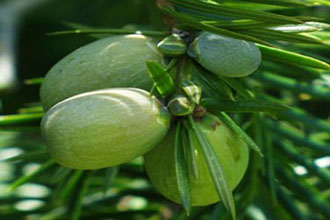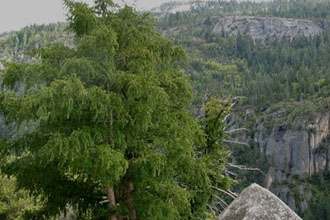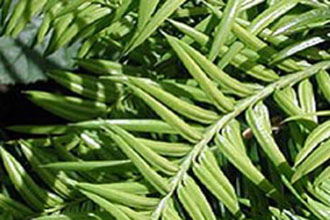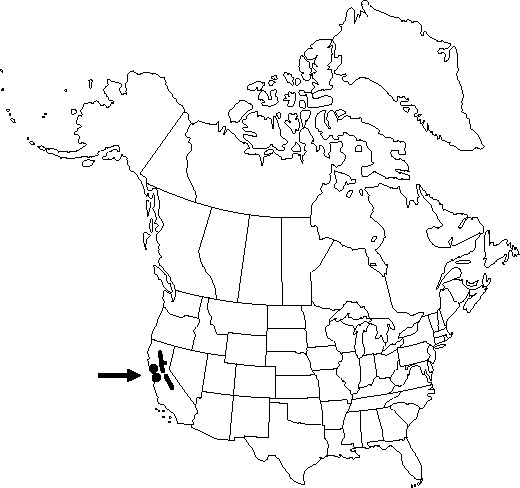Taxonomy: Kingdom - Plantae (plants). Subkingdom - Tracheobionta (vascular plants). Superdivision - Spermatophyta (seed plants). Division - Coniferophyta (conifers). Class - Pinopsida. Order - Taxales. Family - Taxaceae (yew family). Genus - Torreya Arn. (torreya). Species - Torreya californica Torr. (california nutmeg).
Ecology: California torreya is a dioecious native evergreen tree, typically from 5-30 m tall and 20-51 cm in diameter. A record tree growing near Fort Bragg measured 43 m in height and 4.5 m in d.b.h. until cut by timber thieves. The crown is pyramidal to irregular in shape. Needles persist for many years. The bark is thin, from 0.8-1.3 cm on mature trees. Roots are described as "deep" . The large, heavy seeds are from 1 to 2.5-3.0 cm long, enveloped by a drupelike aril.



